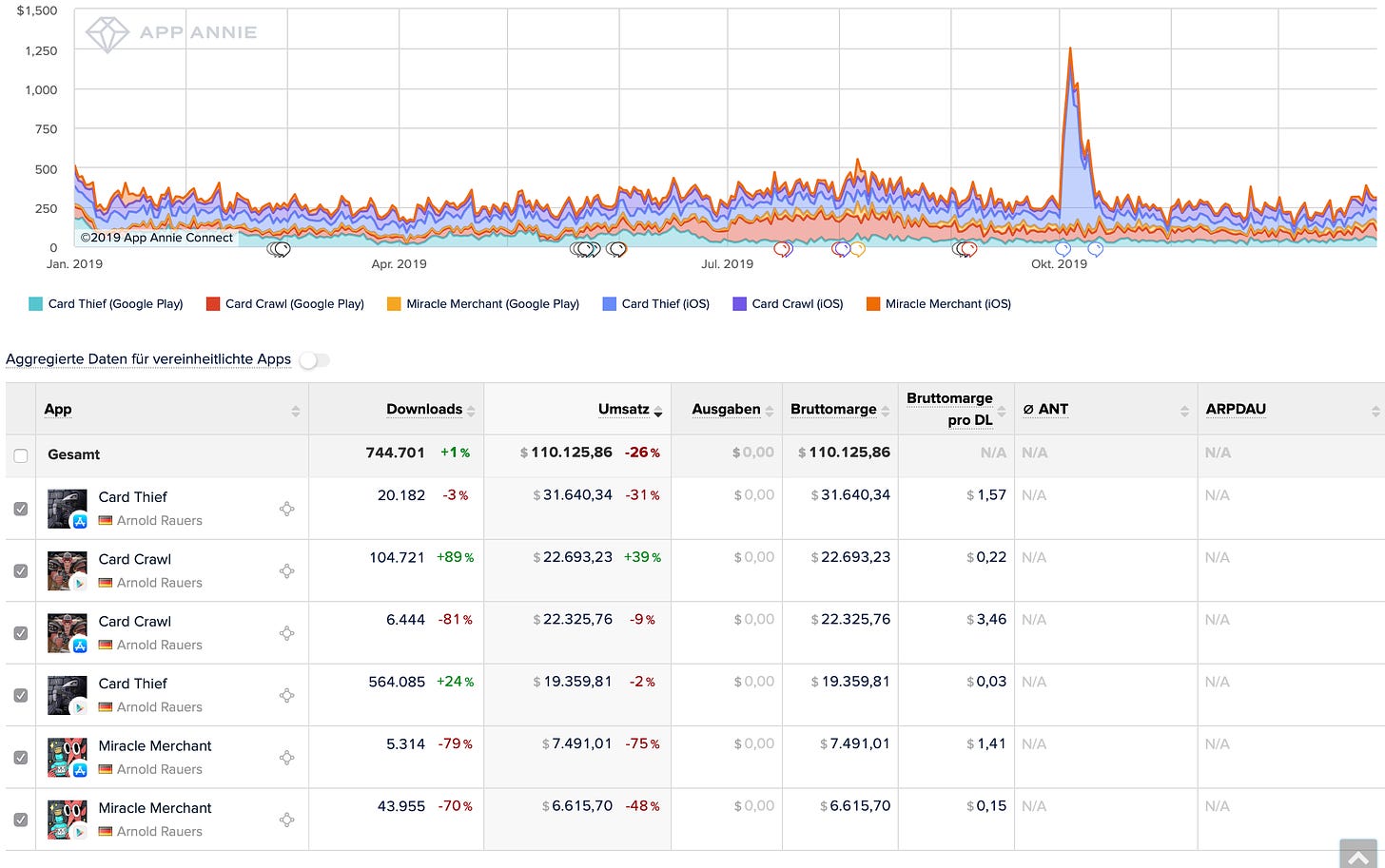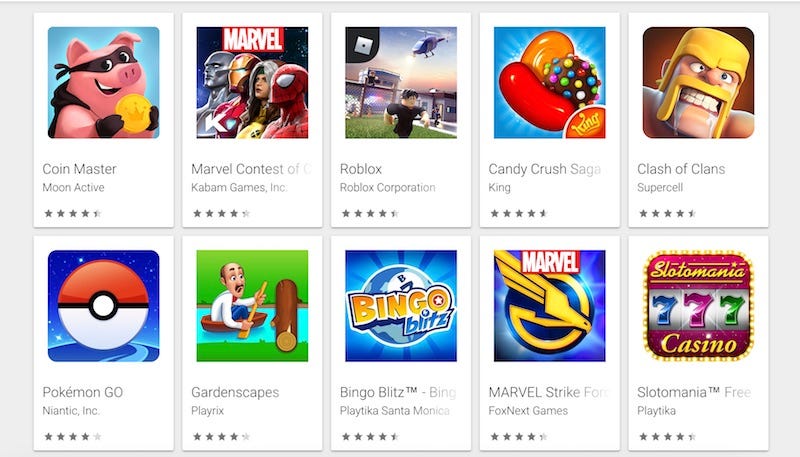Trending
Opinion: How will Project 2025 impact game developers?
The Heritage Foundation's manifesto for the possible next administration could do great harm to many, including large portions of the game development community.

Featured Blog | This community-written post highlights the best of what the game industry has to offer. Read more like it on the Game Developer Blogs or learn how to Submit Your Own Blog Post
Mobile games grossed almost $70 billion in 2019. But why aren't lots of small and medium indies without experience jumping into the space? Here's some good reasons.

[Hi, I’m ‘how people find your game’ expert Simon Carless, and you’re reading the Game Discoverability Now! newsletter, which you can subscribe to now, a regular look at how people discover and buy video games in the 2020s.]
So, you might be saying - why aren’t you covering the mobile market in this newsletter, Simon? According to approximated research, it was almost a $70 billion market in 2019, whereas PC and console markets individually were way less than that. And mobile game spending has surged during the COVID-19 lockdown.
I’ve been chatting to one or two readers about this, and also picked some brains. And I think mobile games are super important. But they’re a tough market for many small and medium-sized independent studios to target. So I’m not planning to address them much here. Here’s why:
If you build up a catalog, solo or tiny devs can occasionally do decently from a premium (paid app) mobile-first strategy. Here’s a better-case scenario from TinyTouchTales (Card Crawl, etc!), who is very transparent about revenue and showed off its 2019 numbers here:

So that’s 110,000 Euros for 2019, plus some ad revenue (and Google Play pass revenue). But that’s across multiple games and SKUs and years of building up profile, plus multiple store features. So I think it’s a slog.
A lot of the reason for that is pricing. Interestingly, Arnold from TinyTouchTales raised his Card Crawl price to $4.99, and it drove 40% more revenue on Google Play in 2019. So being slightly more aggressive can help.
But you really can’t be charging more than $9.99 for a premium iOS/Android game, and anything over $4.99 needs to be a super impressive-looking game. So getting to a million dollars in gross sales requires you to sell hundreds of thousands of copies. Versus 33,000 copies at $30 on PC/console. You can see the issue.
(However: I do think if you’ve had a hit game on PC or console, and it works well with a touchscreen, converting it to iOS/Android as a premium title can make sense. See Slay The Spire now being on iOS, for example. But it’s a post-PC and console step for bigger hits.)

Perhaps ‘scary’ is the wrong word, but… perhaps it isn’t. The rewards profit-wise can be immense. And it’s definitely possible to make high quality F2P mobile games as a smaller studio. But there are big obstacles to success, as I see them:
The F2P mobile market has a different route to ‘buzz’ & user acquisition
A lot of what I talk about on Game Discoverability Now! is about pitching your PC/console game to a subset of the world who identifies as ‘a game player’. They enjoy learning about new games. You can reach them via streamers, traditional media, and community platforms that you nurture yourself.
The F2P mobile market encompasses hundreds of millions of people who mainly play games, but do not necessarily have ‘game player’ as a key part of their identity. They may look for new titles purely on App Stores, or via video ads in games that they already enjoy.
So App Store placement, cross-promotion and paid ads are vital - a very different approach to what I discuss normally in this newsletter. Those are hard things to get right from scratch, and generally require a lot of money (many times the development budget of the game itself!) in order to scale massively.
F2P mobile monetization means ad visibility might be ‘winner takes all’

Since your organic reach will only get you so far as a F2P mobile game (and probably not to long-term profitability!), you’re going to have to find other ways to acquire users.
And you’ll be competing for ad spend with other publishers/devs who may be able to afford more $ than you. Sometimes, that’s purely because their average revenue per acquired user is higher.
So if they can gross $2.01 (made-up number!) per acquired user, including ads and in-app purchases, and that acquisition costs $2, they can keep spending forever. Your own monetization needs to be finely tuned to high levels before a full launch. And the rich often get richer in the mobile F2P space.
(At least one dev I know who made a mobile F2P game as an experiment ended up grossing a few thousand dollars from organic installs, but then ran out of things to do. Advertising wouldn’t have been profitable, so there was no way to grow the game.)
I don’t mean to say this is impossible. If you’re a veteran of one of the bigger mobile F2P studios, you know how the sausage is made, for example, and can replicate it at a smaller startup.
If you really are starting this process from scratch, the Game Discoverability Day I programmed at GDC 2019 had a talk just for you, from Mike Gordon of (mobile idle sim publisher) Iron Horse Games.
Mike is incredibly honest and helpful about how to scale your smartphone F2P game, and the full talk is on GDC’s YouTube channel for free:
You’re competing against killer design/monetization skills in big F2P companies
I recently linked this excellent Deconstructor Of Fun analysis of Supercell’s latest, Hay Day Pop, on my Twitter feed. It’s written by a mobile consultant who previously worked on Farm Heroes Saga at King, and she really knows her stuff. (The whole blog is great for F2P mobile game context, by the way, as is PocketGamer.biz.)
What I took away from the article was that the design/monetization balance to get your F2P mobile game profitable (and your users retained) is a complex and high-skilled job. It’s not like PC/console games, where you can make a unique-looking and feeling game with a small team in your own style, and break out.
It’s much more complex and engineered, and you need to know what levers to pull swiftly and iteratively after launch. Should you add a battle pass? What should you tweak quickly to increase your ARPPU by 25%? This questions have to be solved, and fast. There’s also how aggressive the monetization gets, and how ethically OK you are with that, haha.
Finally, you can try making games for iOS and Android that are largely free, but monetize solely via ads. Ads have become more lucrative in recent years, so that might make sense. But you’re also competing against some very industrialized players in the ‘top free games’ space, too.
Anyhow, mobile is fascinating and high-grossing space. But it’s quite different from the one that we generally cover here. So thanks for reading why I won’t be covering it (further), haha!
(Thanks to Ian Masters and Andy Sum for helping me to puzzle out my thoughts for this newsletter! And if you feel like I’ve misrepresented anything, please contact me and chat about it - this is a space I know slightly less well.)
Read more about:
Featured BlogsYou May Also Like